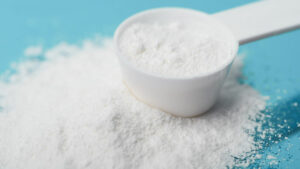According to the National Center for Complementary and Integrative Health, a division of the National Institutes of Health (NIH), probiotics—found in yogurt, and other fermented foods, such as kefir and buttermilk, dietary supplements, and even beauty products—are live microorganisms that are intended to have health benefits, when consumed or applied to the body.
Most probiotics contain a variety of microorganisms—for instance, Lactobacillus and Bifidobacterium—with certain yeasts like Saccharomyces Boulardi qualifying, as well.
Many of probiotics sources will also have prebiotics—nondigestible food—inulin—to support the healthy probiotic bacteria. When pre and probiotics are combined together, the term becomes synbiotics.
Probiotics create healthy microorganisms in the gastrointestinal tract—where as much as 70% of our immunity is derived from the mucosa-associated lymphoid tissue (MALT) and the gut-associated lymphoid tissue (GALT). Probiotics produce substances—among them butyrate—that influence our immune response.
The community of organisms that lives on and in the human body is called the “microbiome.”
The Human Microbiome Project, which was funded by the NIH from 2007 to 2016, played a key role in this research by mapping the normal bacteria that live in and on the healthy human body.
The NIH says that, “probiotics have shown promise for a variety of health purposes, including prevention of antibiotic-associated diarrhea (including diarrhea caused by Clostridium difficile), prevention of necrotizing enterocolitis and sepsis in premature infants, treatment of infant colic, treatment of periodontal disease, and induction or maintenance of remission in ulcerative colitis.”
It was also pointed out that how much of the probiotic a person would have to take, or who would be most likely to benefit, is under ongoing research.
From the NIH research, it appears that probiotics are a first line defense against harmful bacteria and, “have an extensive history of apparently safe use, particularly in healthy people.” What is still outstanding is whether the same can be said for those people with severe illness and the associated compromised immune systems.
Probiotic supplements are measured by how many CFU’s—colony forming units usually in the billions—are delivered. The NIH says, “the seven core genera of microbial organisms most often used in probiotic products are Lactobacillus, Bifidobacterium, Saccharomyces, Streptococcus, Enterococcus, Escherichia, and Bacillus.”
It’s further noted that, “because probiotics must be consumed alive to have health benefits and they can die during their shelf life, users should look for products labeled with the number of CFU at the end of the product’s shelf life, not at the time of manufacture.”
For more information, I suggest you sign up for my free, weekly wellness update—Mackie Mail.
Remember, you should always consult your physician before beginning any exercise, diet, or nutritional supplementation program.











